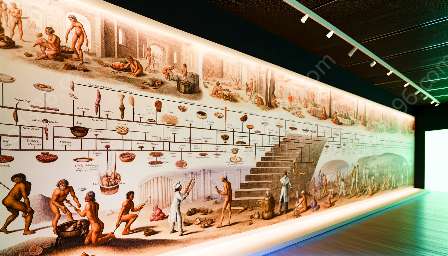The evolution of culinary techniques is deeply intertwined with food culture and history. Throughout time, food cooking technologies have undergone significant transitions that have shaped the way we prepare and consume food. From the earliest methods of cooking over open fires to modern kitchen appliances, each advancement has left its mark on the way we approach food and cuisine.
The Early Days: Open Fire and Pit Cooking
Thousands of years ago, early humans relied on simple methods of cooking using open fires and pit cooking. This primitive form of cooking laid the foundation for what would eventually become sophisticated culinary techniques. The use of fire allowed for the transformation of raw ingredients into more palatable and digestible forms, marking the beginning of food technology.
Introduction of Food Preservation Techniques
As societies advanced, the need for food preservation became apparent. Various techniques such as smoking, drying, and salting were developed to extend the shelf life of perishable foods. These preservation methods allowed for the transportation of food over long distances and the creation of new culinary traditions as different foods became available to different regions.
The Advent of Cooking Utensils
The development of cooking utensils further revolutionized food preparation. From the invention of pottery for cooking vessels to the refinement of knives and other tools, these advancements allowed for new cooking methods and expanded the possibilities in the kitchen.
Invention of the Oven and Stove
The invention of the oven and stove introduced a new era of controlled cooking. These technologies provided a more precise and efficient way to apply heat to food, leading to the creation of more complex and varied dishes. Baking, roasting, and braising became popular cooking techniques, shaping the culinary landscape.
Industrial Revolution and Mass Production
The Industrial Revolution brought about dramatic changes in food cooking technologies. The invention of kitchen appliances such as refrigerators, canned food, and electric stoves revolutionized the way food was stored and prepared. The mass production of food items made ingredients more accessible, leading to the standardization of recipes and the rise of convenience foods.
Modern Innovations: Microwave and Sous Vide
More recently, the introduction of the microwave and sous vide cooking has further transformed the culinary world. These technologies offer convenience and precision, allowing for new methods of cooking and food preparation. The microwave enables quick heating and cooking, while sous vide cooking involves precise temperature control for consistent and flavorful results.
Impact on Food Culture and History
Transitions in food cooking technologies have had a profound impact on food culture and history. Changes in cooking techniques have influenced the types of dishes that are prepared, the ingredients that are used, and the way meals are shared and enjoyed. These technological shifts have also shaped cultural identities and traditions, as different regions adopted and adapted new cooking methods to suit their local cuisines.
Conclusion
The evolution of culinary techniques, intertwined with food culture and history, reflects the dynamic nature of food and cooking. From the earliest methods of cooking to the modern innovations, transitions in food cooking technologies have continuously reshaped the way we approach food and cuisine, leaving a lasting imprint on our culinary traditions.

